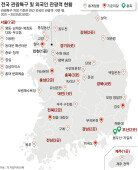Delay of Wartime Command Transfer
President Lee Myung-bak and U.S. President Barak Obama agreed Saturday to delay Washingtons transfer of wartime operational control to Seoul by three years and seven months in their summit in Toronto. Under the agreement, the transfer will come Dec. 1, 2015, instead of April 17, 2012. The agreement affirms the strong commitment of the two allies not to tolerate North Koreas military provocations. The change in date is also the right decision considering the increasingly volatile security situation on the Korean Peninsula in the wake of North Koreas sinking of the South Korean naval vessel Cheonan.
Seoul and Washington agreed to the 2012 transfer date in February 2007 largely because of the Norths missile tests in April last year and second nuclear test in May the same year. South Korea and the U.S. will hold presidential elections in 2012. The North has designated 2012, the centennial anniversary of the birth of its founder Kim Il Sung, the year to complete its vision of making itself a powerful nation. In line with the revised schedule, the establishment of South Koreas command headquarters for ground forces and the relocation of U.S. forces to Pyeongtaek, Gyeonggi Province, are likely in 2015. Seoul and Washington decided to delay the transfer based on the understanding that switching command in 2012 under such a complex and vulnerable security situation is like gambling.
Military intelligence said the North will never give up its nuclear weapons and could even develop small and light nuclear warheads. A U.S. nuclear umbrella is essential to the survival of South Korea. As Obama promised, providing extended nuclear deterrence for South Korea at the same level as that for the U.S. is necessary. To this end, the control of wartime operational command by the South Korea-U.S. Combined Forces Command and its commander is inevitable. If the command is transferred to South Korea and operations in a contingency are led by the South Korean military with help from U.S. forces, obstacles can arise in the automatic involvement of American troops, deployment of additional forces, and provision of the nuclear umbrella.
The transfers delay, however, is no guarantee for the security of the Korean Peninsula. U.S. officials have made it clear that no delay will happen after 2015, meaning South Korea needs to achieve self-defense capability within five and a half years. For Seoul to unilaterally exercise wartime operational control, it must be able to closely monitor North Koreas movements, a command, control, communications, computer and intelligence system, and precision attack capability. Seoul has depended on Washington for these areas. The South also needs an airborne warning and control system, high-altitude endurance unmanned aerial vehicles (Global Hawk), and a state-of-the art arsenal. This will inevitably led to an increase in the defense budget.
Wartime operational control cannot be solely seen from the perspective of sovereignty and independence as it was under the previous Roh Moo-hyun administration. If such a perspective was applied to NATO member countries, they cannot be called sovereign nations. The bilateral military alliance was established because U.S. strategic interest is aligned with South Koreas national security interest. The alliance does not signify a master-servant relationship. On the bilateral agreement to delay the transfer, the main opposition Democratic Party urged the two sides to stick to the original schedule, citing the importance of achieving national security sovereignty. This claim is irresponsible, however. Demanding dissolution of a system that allows firm response to North Koreas military provocations is contradictory to the partys comment that it abhors war.
Headline News
- N. Korea redefines S. Korea as ‘hostile state’ in revised constitution
- Samsung develops graphic DRAM with industry-leading capacity and speed
- Three questions allegedly leaked via text message during Yonsei Univ. essay test
- China to inject 340 trillion won in loans to support real estate sector
- Dodgers beat Mets to take 2-1 lead in NLCS







